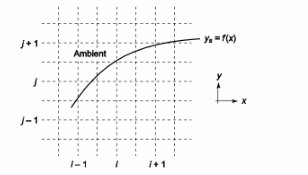Answer the following statement(s) true (T) or false (F)
Which of the following devices are heat engines?
1.Your body
2. An automobile engine
3.A tornado
4. The sun
5. A rocket
1. FALSE
2. TRUE
3. TRUE
4. FALSE
5. TRUE
You might also like to view...
A uniaxial composite material is made from 75 vol % continuous kevlar fibers and 25 vol % epoxy. The kevlar fibers have an elastic modulus of 131×109 Pa and a tensile strength of 4.0×109 Pa. The epoxy resin has an elastic modulus of 5×109 Pa and a tensile strength of 50×106 Pa. The composite must withstand an axial stress of 0.5×109 Pa and a transverse stress of 4×106 Pa. The axial and transverse stresses are not applied simultaneously. Assume that both the kevlar fibers and the epoxy matrix are elastic up to their failure.
(a) Determine the elastic modulus in the axial direction of this composite material. (b) Determine the elastic modulus in the transverse direction of this composite material. (c) Determine the axial strain in the composite due to the axial stress alone. (d) Determine the stresses in the fibers and in the matrix for the axial stress. (e) Can each of the components of this composite withstand the axial stress, and if not, what is the fracture stress? (f) What is the transverse fracture stress? Can the composite withstand the transverse stress applied alone?
Consider two-dimensional steady conduction near a curved boundary. Determine the difference equation for an appropriate control volume near the node (i, j). The boundary experiences convective heat transfer through a coefficient h to ambient temperature Ta. The surface of the boundary is given by ys = f(x).
GIVEN
- Two-dimensional steady conduction near a curved surface
- Convective boundary condition
- Curved surface given by ys = f(x)
FIND
(a) Difference equation for a node i, j near the surface
SKETCH

Two moles of an ideal gas fill a volume of 10 liters with a pressure of 2.4 atm. The gas is thermally insulated from the surroundings. A membrane is broken which allows the gas to expand into the new volume which is 3 times as large as the old volume. What is the new temperature?
A 0.400-kg ball approaches a very massive wall at 20.0 m/s perpendicular to wall and rebounds with 70.0% of its initial kinetic energy. What is the magnitude of the change in momentum of the wall?
A) 14.7 kg?m/s B) 13.6 kg?m/s C) 2.40 kg?m/s D) 1.31 kg?m/s E) 0.00 kg?m/s